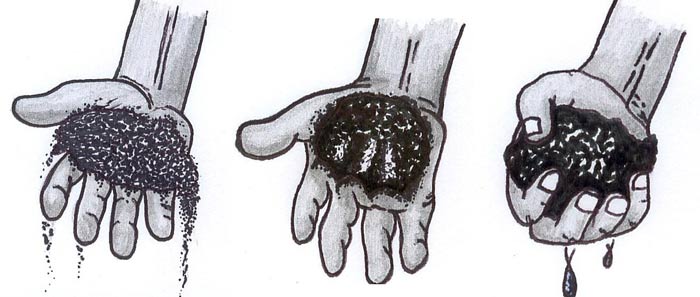What is the establishment period and how long is it. In broad terms by the end of the establishment period a tree should have regenerated enough roots to keep it alive without additional irrigation.
The establishment period can last from 3 months to 3 years depending on size and when planted. Trees will establish quicker in warmer climates than cooler. All trees need regular irrigation during establishment; the amount depends on climate with temperature and rainfall being the main influences. Adequate irrigation promotes quick establishment by encouraging rapid root growth into the landscape soil. (Harris and Gilman 1993).
To determine if a plant is fully established compare growth rates before and after transplanting. Growth rate will slow immediately after transplanting and recover to pre-transplanting levels as the root system regenerates and post planting stress is reduced.
After planting, water is usually the most limiting factor. Even if soil moisture is adequate, the root system may not be able to absorb water fast enough to completely satisfy the needs of the plant. Temperature, light, nutrients, and other factors are usually less limiting than water for the initial period after planting. It is very important to make sure the root ball moisture levels are correct as the tree relies heavily on this during the first growing season.
This is why it is very important to plant into non compacted, aerated soil to encourage roots to elongate and to extend out into a larger soil volume as quickly as possible. So therefore it is essential that the trees you purchase have a well develop root system and we believe at Mt William Advanced Tree Nursery the best way of doing this is by purchasing a tree in an air pruned containers (Rocket Pot®), or from a container treated with Spin out ®.
Irrigation of Newly Planted Trees
When newly planted trees die, blame is often placed on bad plants, insects or disease. However more plants die from being planted too deep, too much or too little water, poor drainage, inadequate preparation of the planting site and no on going maintenance program to ensure proper establishment and long term survival. The irrigation system that is selected should be separate from any other system and be specific for trees. This can range from watering by hose from tankers or mains or a low volume irrigation system. What ever system is used regular monitoring is required so the correct amount can be given. Systems designed for garden beds or lawns can lead to over and under watering. For example trees planted into lawns that are irrigated regularly can cause over watering as a lot of this water runs over the soil surface and collects in the loose soil of the planting hole. Root balls of trees can dry out several hours to one day after irrigation (Nelms and Spomer 1983). The root ball has to be watered when it dries out, even when the surrounding soil is moist, because water will not move from the surrounding soil into the root ball unless the soil is saturated. Trees cannot use this moisture outside the root ball until the roots grow into the back fill.
Frequency of Irrigation
There has been a lot written on the amount and frequency of water required for newly transplanted trees. It is difficult to follow these recommendations as there are many variables that can affect the transpiration rate which in turn determines the amount of water and frequency required. You must familiarise yourself with the characteristics of your planting site, each situation is different.
You need to consider:
• Temperature
• Rainfall
• Wind
• Humidity
• Amount of cloud cover
• Soil Drainage
• Compacted Soil
• Soil texture of root ball
• Time of year
• Size of tree being planted
• Transpiration rate
• Evaporation rate
Then make any physical changes to the planting site before planting to provide the best environment possible for the successful establishment of the newly planted tree.
There are many guides and formulas (Gilman 1997, K. Handreck and N. Black 1984, R. Harris, J. Clark and N. Matheny 1999.) used to determine how much water a tree needs after planting but these are a guide only and no two sites are the same and I cannot emphasise enough that you must evaluate the planting site, understand the conditions you are working in and consider the weather conditions because these factors will determine how often and how much.
Generally speaking over watering is the major reason for trees dying; under watering will not necessarily kill the tree but retard critical root development outside the root ball, essential for successful establishment.
Moisture needs to be available in the soil for the tree at all times as transpiration is taking place, not just when you decide to water. The irrigation needs to be matched to the weather conditions and the stage of growth.
| Trunk Diameter | Watering Requirements | Approx. Irrigation Volume |
| 50mm | Daily for 2-4 weeks; every other day for 2 months; weekly until established. | 11-23 litres |
| 100mm+ | Daily for 2 months; every other day for 5 months; weekly until established. | 45 litres |
(Adapted from Gilman 1997)
The above chart is based on weather conditions not dissimilar to South Eastern Australia but does not take into account weather conditions, time of year and drainage rates from soil. The assumption here is that trees are planted into well drained sites. Remember that minimum irrigation to keep trees alive eliminates daily irrigation, and could be extended to once a week. Other "experts" suggest weekly amounts for example 4 litres of water per week per 25mm trunk diameter. Therefore if you purchase trees from Mt William in the following containers this would a guide to the amount of water required.
| Container Size | Tree Height | Trunk Diameter | Approx. Irrigation per week |
| 33cm | 1.3-2m | 25mm | 4 litres |
| 40cm | 2.1-2.8m | 30-45m | 5-8 litres |
| 60cm | 3-4m | 50-75mm | 9-12 litres |
Other methods used are by using formulas to determine tree water use and the potential volume of water stored and available in the root system for use by the tree. For the home gardener these can get very complicated and confusing. Just as these two charts show the opinion on the amount and frequency can vary enormously.
As per our planting guide the best practice to determine frequency is to do physical checks by digging down the side of the root ball or using a probe to try and determine moisture levels and take into account all points mentioned previously. If the soil in the back fill crumbles and falls out of your hand as you open your figures, increase the volume of irrigation. If soil stays together as you open your fingers moisture in the back fill is probably ok. If water drips out between your fingers reduce the volume of water that is being applied. It is very important to check the root ball as this may be dry.
Left hand drawing shows dry soil falling from hand. End drawing showing the extreme with water dripping from hand. Middle hand shows soil holding together due to correct moisture.
Placement of Irrigation
Apply water directly to the root ball, because that is where the roots are located at planting. If watering by hand make sure a berm of soil is placed around the edge of root ball to hold the water (See Mt William Planting Guide) above the root ball so the water can soak into the root ball. As the root system develops and spreads, the berm will need to be made wider.
If using micro sprays or drippers make sure they are located over the root ball, as well as the surrounding soil. Remembering that the area over the root ball, may need more water initially than the surrounding soil.
Irrigation systems selected should have the capacity that has roots spread into the surrounding soil these areas can be irrigated. If the surrounding soil is not irrigated you will not get adequate root elongation into the surrounding soil volume. This is very important because as the root system expands it has access to the increasing volume of water that is available in the surrounding soil. Shows dripper system covering all of the root plate and allows the expansion of the system as roots develop. This also allows for good penetration of water to the root system.
Shows dripper system covering all of the root plate and allows the expansion of the system as roots develop. This also allows for good penetration of water to the root system.
The irrigation system selected needs to be able to deliver slow deep amounts of water. This will help prevent run off and deep so that the soil volume where a large amount of the roots are located is watered and not just the top layer of soil.
Following Mt William Advanced Tree Nursery Planting Guide and guide lines set out in relation to establishing trees should ensure success. Keeping in mind planting at the correct depth into well aerated soil, maintain adequate soil moisture by watering effectively and eliminating competition by mulching to control weeds.
References: Gilman, E 1997, Trees for Urban and Suburban Landscapes. Handreck, K and Black, N 2001, Growing media for ornamental plants and turf. Harris, R and Clark, J and Matheny, N 1999.Arboriculture Integrated Management of Landscape Trees, Shrubs, and Vines. Lloyd, J Coordinating Author 1997, Plant Health Care for Woody Ornamentals.






